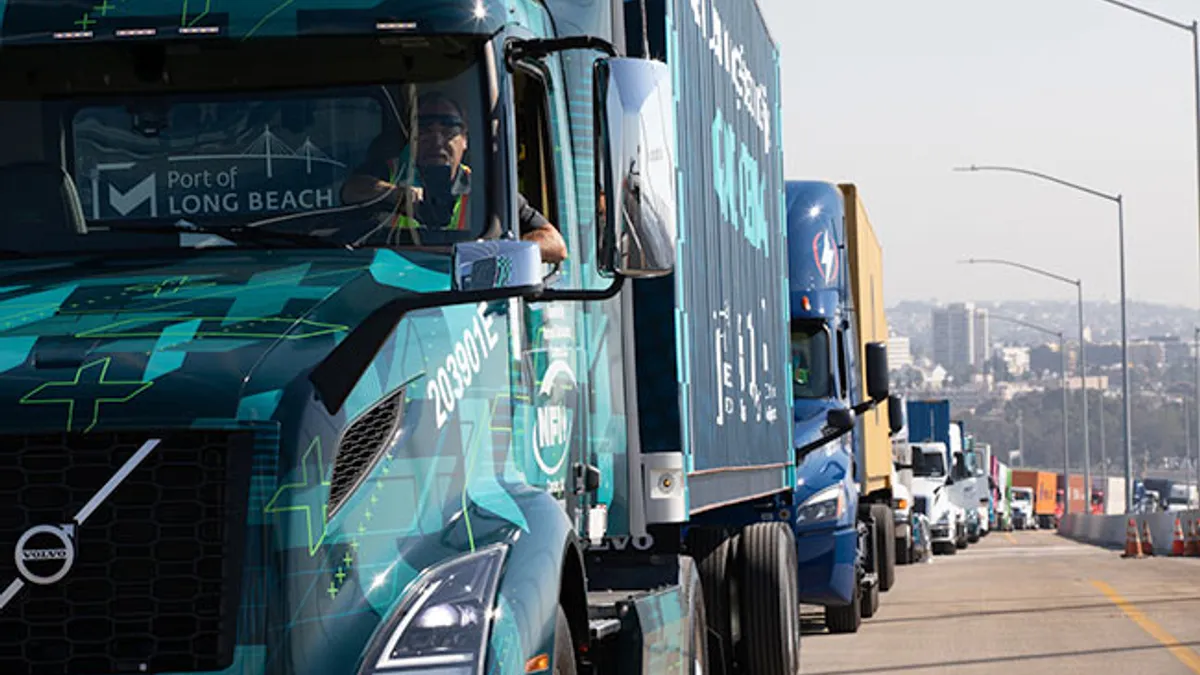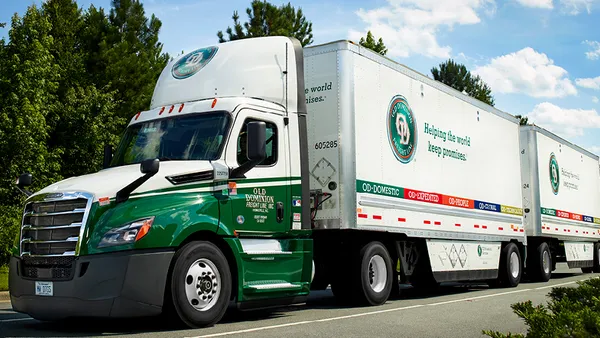Dive Brief:
- Truckers at the Port of Long Beach can now receive information, alerts and updates about traffic conditions via text message, according to an announcement Wednesday. Drivers can opt into the port's free system, called Truck Alert.
- "Truck Alert is designed to reduce road congestion by providing truck drivers an opportunity to improve scheduling and enhance turn times during the unprecedented cargo surge we’re experiencing," Mario Cordero, executive director of the Port of Long Beach, said in a press release.
- The offering comes as port congestion bottlenecks the supply chain, particularly on the West Coast. The Port of Long Beach's latest data showed it handled 807,704 total 20-foot-equivalent units in August, up 11.3% YoY and up 21.6% from August 2019.
Dive Insight:
The Truck Alert system aims to assuage some of fleets' and drivers' frustrations, resulting from months of congestion at Southern California ports.
Jams in the supply chain led to increased turn times and longer dwell for drayage providers servicing the ports. Those bottlenecks have spiraled into detention and demurrage, now a contentious topic among supply chain stakeholders that has led to government audits.
Detention and demurrage is "as bad as its ever been in my experience," said Michael Mecca, founder and CEO of PortPro, a drayage TMS.
Fleets have said they're often unable to move containers due to congestion or appointment availability but are charged anyway. J.B. Hunt said equipment detention by intermodal customers was one of its biggest obstacles in Q2.
"I think the demurrage charges that trucking companies are incurring ... generally aren't a result of service failures," Mecca said. "They're results of the environment that the ports are in today."
Drivers looking for work used to flock to drayage providers, because the nature of the job allowed them to be home every night. That changed as a deluge of imports arrived to West Coast shores and gummed up the supply chain.
Drayage drivers in the past could complete six to seven jobs per day, said Justin Barnes, TOC Logistics International's ground domestic product owner. Now that figure is closer to three, because drivers are "spending a lot more time searching for chassis and equipment," Barnes said.
Most drivers receive pay per move or mile, not per hour or by salary, which means a congested port results in fewer moves and less pay.
"Working as a drayage driver right now is not easy," Mecca said.
Given these conditions, the driver availability problems prevalent in long-haul trucking are extending into drayage, too. Drayage executives not only have to contend with detention and demurrage, but they also have to ensure they have the right incentives in place to recruit and retain drivers — not to mention, keeping the business going and containers moving in a congested environment.
Barnes and Mecca suggested information exchange and communication with shippers, ports and other partners.
"No one company is going to solve the problem by itself," Barnes said. "We have to build a network of reliability so that we can solve these problems together."
The drayage sector has typically been underserved with regards to technology, according to Mecca.
"All the sexy money has gone into truckload [and] digital freight brokering," he said.
Truck Alert brings technology and real-time data to drayage. To subscribe to the service, drivers can text "TruckAlert" to 79516. Once signed up, they'll begin to receive notifications on road closures, crashes and other port conditions, as well as suggested detours.
Real-time visibility into port conditions will be critical for drayage companies and their drivers, as the bottlenecks are not expected to ease anytime soon. Mecca said the drayage providers he speaks to and their customers anticipate "things still being really crazy" into next summer.
This story was first published in our sister publication, Transport Dive. Sign up here.














